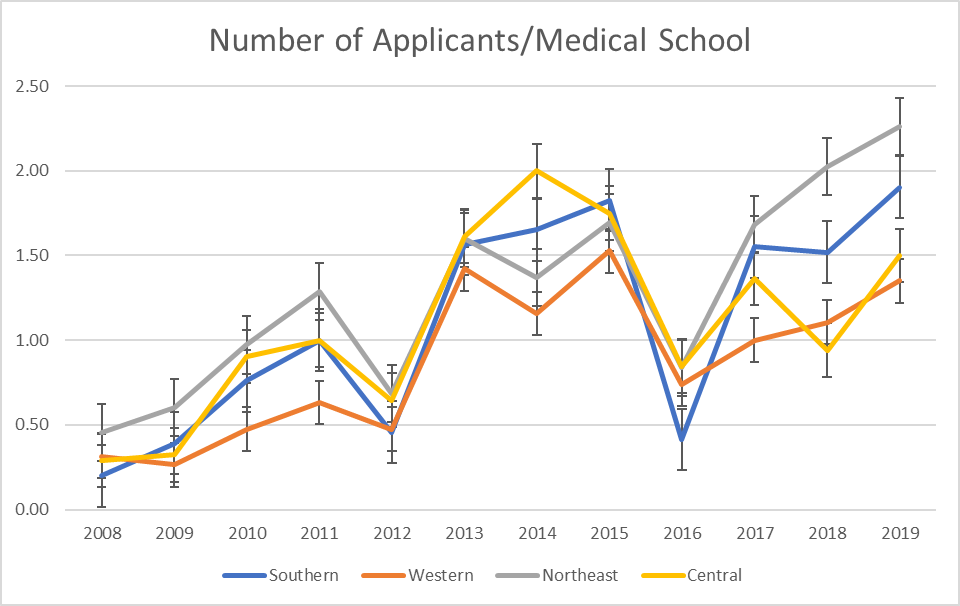Regional Influences On The Number Of Medical Student Applicants To Integrated Vascular Surgery Training Programs
Madeline M. Dills, MD1, Claudie M. Sheahan, MD1, Dawn M. Coleman, MD2, Jean Bismuth, MD3, Benjamin J. Pearce, MD4, William D. Jordan, Jr., MD5, Malachi G. Sheahan, III, MD1.
1Louisiana State University Health Sciences Center, New Orleans, LA, USA, 2University of Michigan, Ann Arbor, MI, USA, 3Houston Methodist DeBakey Heart & Vascular Center, Houston, TX, USA, 4University of Alabama at Birmingham, Birmingham, AL, USA, 5Emory University School of Medicine, Atlanta, GA, USA.
Title: Regional Influences on the Number of Medical Student Applicants to Integrated Vascular Surgery Training Programs
Objective: Integrated vascular surgery training programs were first approved in 2008. Since then, there has been little progress in understanding applicant numbers and their influences. Our goal was to assess regional variances and trends in candidate numbers.
Methods: The Electronic Residency Application Service (ERAS) defines the regions of the United States as Southern, Western, Northeast, and Central. We solicited an ERAS report defining the number of integrated vascular surgery applicants from each region for the years 2008-2019. The number of applicants per region annually was divided by the number of accredited, allopathic medical schools. The number of applicants was then compared to the number of integrated training programs in the region. Statistically significant variables were determined with ANOVA methodology.
Results: The number of regional applicants per medical school showed high correlation (ρ=.82) over the years studied (Figure 1). In the last 2 years the number of applicants per school in the Northeast (P<.001) and Southern (P<.05) regions increased significantly above the other regions. The Northeast had the highest number of applicants per medical school for nine of the twelve years studied. The Southern region had the highest ratio of applicants per integrated program (P<.005, Figure 2). There were sharp, as yet unexplained, national declines in applicants in the years 2012 and 2016.
Conclusions: The Northeast region consistently produces the most integrated vascular applicants per medical school. The Southern region yields the highest number of applicants per integrated vascular residency. Regional variations can help to determine best practices in medical student recruitment at both the medical school and integrated vascular residency program level. More research is needed to explain what outside factors could account for the severe decline in applicants in 2012 and 2016. 

Back to 2020 Abstracts
